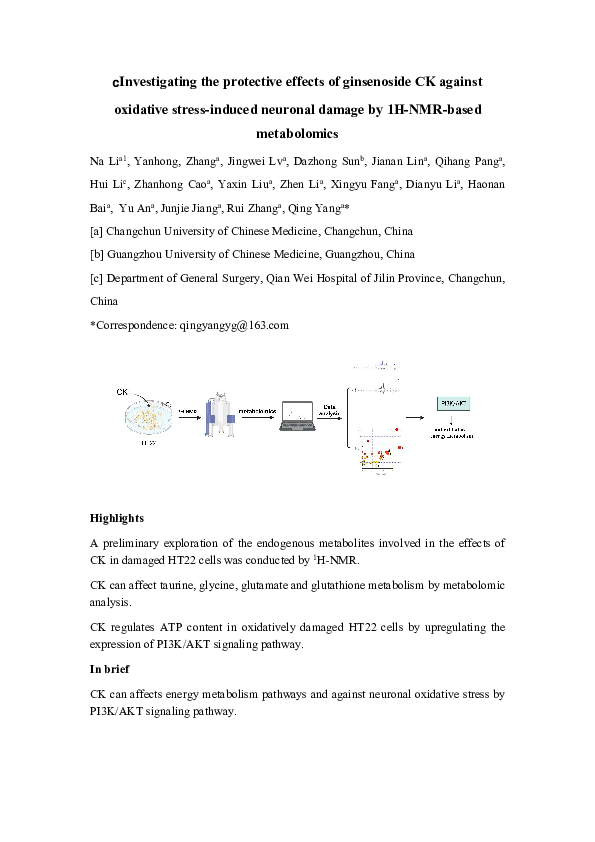Supplementary Material
cInvestigating the protective effects of ginsenoside CK against oxidative stress-induced neuronal damage by 1H-NMR-based metabolomics
Preprint |
10.55415/deep-2022-0046.v1
This is not the most recent version. There is anewer
versionof this content available.
Abstract
Oxidative stress is an important pathogenic mechanism in degenerative diseases such as Alzheimer's disease (AD). Although ginsenoside compound K (CK) is protective against neuronal oxidative damage, the underlying mechanism remains to be understood. In this study, the protective effects of ginsenoside CK against hydrogen peroxide-induced oxidative stress damage in HT22 cells were investigated by 1H nuclear magnetic resonance (1H-NMR)-based metabolomics. The optimal CK concentration for reducing oxidative stress damage in nerves was determined using the MTT. CK (8 μM) significantly increased the HT22 cell survival rate after the model was established. Cell lysates were subjected to 1H-NMR metabolomics, western blotting, and ATP assays for verification. Metabolic perturbation occurred in HT22 cells in the model group but not in the control group. Twenty biomarkers were identified in this study and used to analyze metabolic pathways. CK reversed metabolic changes in HT22 cells by altering taurine, glutamate, glycine, and glutathione metabolism. Subsequently, CK increased ATP content and expression of components of the PI3K/AKT signaling pathway in HT22 cells. These findings demonstrated CK can prevent oxidative stress damage and protect nerves by regulating energy metabolism pathways, such as taurine and glutamate metabolism and other amino acid metabolism pathways, providing a rationale for CK in AD.


